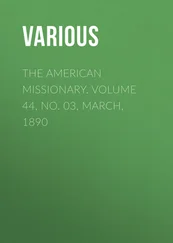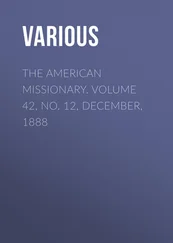Various - Scientific American, Volume 40, No. 13, March 29, 1879
Здесь есть возможность читать онлайн «Various - Scientific American, Volume 40, No. 13, March 29, 1879» — ознакомительный отрывок электронной книги совершенно бесплатно, а после прочтения отрывка купить полную версию. В некоторых случаях можно слушать аудио, скачать через торрент в формате fb2 и присутствует краткое содержание. Жанр: foreign_antique, periodic, foreign_edu, на английском языке. Описание произведения, (предисловие) а так же отзывы посетителей доступны на портале библиотеки ЛибКат.
- Название:Scientific American, Volume 40, No. 13, March 29, 1879
- Автор:
- Жанр:
- Год:неизвестен
- ISBN:нет данных
- Рейтинг книги:5 / 5. Голосов: 1
-
Избранное:Добавить в избранное
- Отзывы:
-
Ваша оценка:
- 100
- 1
- 2
- 3
- 4
- 5
Scientific American, Volume 40, No. 13, March 29, 1879: краткое содержание, описание и аннотация
Предлагаем к чтению аннотацию, описание, краткое содержание или предисловие (зависит от того, что написал сам автор книги «Scientific American, Volume 40, No. 13, March 29, 1879»). Если вы не нашли необходимую информацию о книге — напишите в комментариях, мы постараемся отыскать её.
Scientific American, Volume 40, No. 13, March 29, 1879 — читать онлайн ознакомительный отрывок
Ниже представлен текст книги, разбитый по страницам. Система сохранения места последней прочитанной страницы, позволяет с удобством читать онлайн бесплатно книгу «Scientific American, Volume 40, No. 13, March 29, 1879», без необходимости каждый раз заново искать на чём Вы остановились. Поставьте закладку, и сможете в любой момент перейти на страницу, на которой закончили чтение.
Интервал:
Закладка:
Various
Scientific American, Volume 40, No. 13, March 29, 1879 / A Weekly Journal of Practical Information, Art, Science, / Mechanics, Chemistry, and Manufactures
TERMS FOR THE SCIENTIFIC AMERICAN

Clubs.—One extra copy of The Scientific American will be supplied gratis for every club of five subscribers at $3.20 each; additional copies at same proportionate rate. Postage prepaid.
Single copies of any desired number of the Supplement sent to one address on receipt of 10 cents.
Remit by postal order. Address
MUNN & CO., 37 Park Row, New York.is a distinct paper from the Scientific American. THE SUPPLEMENT is issued weekly. Every number contains 16 octavo pages, with handsome cover, uniform in size with Scientific American. Terms of subscription for Supplement, $5.00 a year, postage paid, to subscribers. Single copies 10 cents. Sold by all news dealers throughout the country.
Combined Rates.—The Scientific American and Supplement will be sent for one year, postage free, on receipt of seven dollars . Both papers to one address or different addresses, as desired.
The safest way to remit is by draft, postal order, or registered letter.
Address MUNN & CO., 37 Park Row, N. Y.The Scientific American Export Edition is a large and splendid periodical, issued once a month. Each number contains about one hundred large quarto pages, profusely illustrated, embracing: (1.) Most of the plates and pages of the four preceding weekly issues of the Scientific American, with its splendid engravings and valuable information; (2.) Commercial, trade, and manufacturing announcements of leading houses. Terms for Export Edition, $5.00 a year, sent prepaid to any part of the world. Single copies 50 cents. Manufacturers and others who desire to secure foreign trade may have large, and handsomely displayed announcements published in this edition at a very moderate cost.
The Scientific American Export Edition has a large guaranteed circulation in all commercial places throughout the world. Address MUNN & CO., 37 Park Row, New York.
A NEW STEAM TILLER
Steam is now made to perform almost everything in the way of heavy labor, to the saving of muscle and energy that may be more profitably employed; and since inventive genius has devised means of governing steam with absolute accuracy, there seems to be no limit to its economical application.
A recent invention in steam engineering, which exhibits in a marked degree the controllability and adaptability of steam, is Mr. Herbert Wadsworth's steam tiller, an engraving of which we present herewith.
This machine (Fig. 1) is provided with a steam cylinder, similar to the cylinder of a steam engine, containing a piston, the rod of which is attached to a crosshead, A, that slides on ways, B, secured to the bed supporting the cylinder.
The tiller, D, as it is carried to starboard or port, slides through a socket, E, pivoted to the crosshead.
The motion of the rudder is communicated to the steam cut-off by means of the shaft, C, crank, J, rod, K, crank, I, and the hollow valve spindle. When the tiller is amidships the valve handle, H, is at right angles to the cylinder, and parallel to the tiller. By moving the lever, H, to right or left, steam is admitted to one end or the other of the cylinder, which, acting on the tiller through the piston, piston rod, and crosshead, moves the rudder; and when the rudder reaches the desired position the cut-off will have been moved the amount necessary to prevent further entrance of steam. When the rudder is influenced by the waves or by the expansion or contraction of steam, the cut-off alters its position in relation to the valve and automatically arranges the steam passages so that the piston is returned to its proper position. The details of the cut-off are shown in Fig. 2; the valve, G, which covers the cut-off, F, acts like a four way cock. The spindle of the cut-off, F, is connected with the lever, I, and is moved by the rudder, as already described. By enlarging or gradually narrowing the ends of the steam ports great rigidity or elasticity may be given to the hold of this engine, according to the requirements of the particular vessel.
Few and simple as are the parts of this machine it is possible, by balancing the valves and suiting the diameter of the cylinder to the work to be performed, to overcome great resistances with a slight effort. The inventor says that this system of valves is considered by experts to be novel and very valuable.
In Fig. 3 is shown a pattern of a slide valve suited to special purposes. Its working is essentially the same as that of the valve already described. The ports are set side by side, parallel with the sides of the valve. The supply port is in the middle, the other ports lead to opposite ends of the cylinder.
In Fig. 4 is shown another application of the controlling valve and cut-off described above. Two oscillating steam cylinders are employed in working the rudder. They are placed on opposite sides of the chest, A, and are supplied with steam through the controlling valve, B. The piston rods of the two cylinders are connected with cranks placed on opposite ends of the shaft, C, at right angles to each other. Upon this shaft, half-way between the pillow blocks which support it, there is a worm which engages a toothed sector, D, on the rudder-post, E. To an extension of the rudder-post is secured an arm, F, which is connected with the arm, G, of the controlling valve. By shifting the lever, H, the supply of steam to the two cylinders may be increased or diminished, or its direction may be changed, so that the engines will be reversed or stopped. This engine is remarkable for its simplicity. The cylinders may be detached and changed if required, one size of bed answering for three different sizes of cylinder, which may vary only in diameter, the stroke being the same, so that the castings for engines of different power are the same except in the matter of the cylinders and pistons, and all the parts are interchangeable—a feature of modern engine building that cannot be too highly valued.
Further information may be obtained from Herbert Wadsworth, 26 Merchants' Bank Building, 28 State street, Boston, Mass.
HOW OUR PATENT LAWS PROMOTE AND IMPROVE AMERICAN INDUSTRIES
On another page we print in full a most suggestive paper recently read before the Manchester (Eng.) Scientific and Mechanical Society, by Mr. Frederick Smith, a prominent builder of that city, contrasting the qualities, styles, and prices of American and English builders' hardware—a paper which the Ironmonger pronounces one of the most serious indictments yet preferred against British workmanship in that department.
The field covered by the paper—the supplying of house builders' hardware—embraces a multitude of conveniences, but no real necessities. Why is it that America has been prolific in novel devices and clever improvements in this department of manufacture as in so many others, while England has gone on stolidly copying ancient forms, changing only to cheapen by the introduction of poor material and sham construction? Mr. Smith mentions several reasons that English manufacturers have given him for the state of things he, as an Englishman, so greatly deplores; but evidently he is not satisfied with any of them, and very justly; for none of them touches the real cause—the radically different attitude of the public mind toward inventions, characteristic of the two countries.
Читать дальшеИнтервал:
Закладка:
Похожие книги на «Scientific American, Volume 40, No. 13, March 29, 1879»
Представляем Вашему вниманию похожие книги на «Scientific American, Volume 40, No. 13, March 29, 1879» списком для выбора. Мы отобрали схожую по названию и смыслу литературу в надежде предоставить читателям больше вариантов отыскать новые, интересные, ещё непрочитанные произведения.
Обсуждение, отзывы о книге «Scientific American, Volume 40, No. 13, March 29, 1879» и просто собственные мнения читателей. Оставьте ваши комментарии, напишите, что Вы думаете о произведении, его смысле или главных героях. Укажите что конкретно понравилось, а что нет, и почему Вы так считаете.












